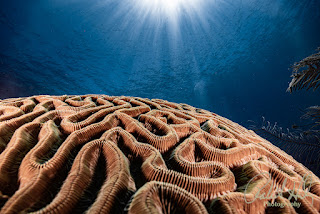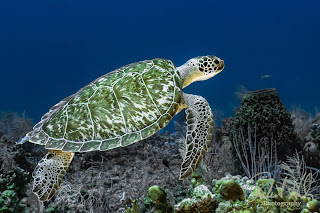How to Recover Lost Colors in Underwater Photos Using Lightroom
Underwater photography comes with challenges, and one of the biggest hurdles is dealing with lost colors. Those vibrant reds, oranges, and yellows can quickly disappear as you descend, leaving your images washed out and dominated by blues and greens. Fortunately, Adobe Lightroom has tools to restore these lost colors and bring your underwater photos to life. This guide dives deep (pun intended) into why colors disappear underwater, how to recognize the problem and a detailed, step-by-step process for recovering them in Lightroom.
Understanding Lost Colors in Underwater Photos
Light behaves differently underwater than it does on land. Water absorbs light wavelengths, starting with reds, then oranges, yellows, greens, and finally blues as you go deeper. By reaching 10-15 feet, red is almost entirely gone, giving photos a blue or green cast that grows stronger the deeper you go. Without artificial lighting like strobes or a flash, images lack the warmth and vibrancy we expect from a stunning underwater scene.
Recognizing lost colors is relatively straightforward. If your photo has:
- A dominant blue or green tint,
- A lack of color contrast, making subjects look "flat" or
- A general dullness in warm hues (like reds and yellows),
You're likely noticing the effects of lost colors. But don't worry—these colors aren't permanently gone, and Lightroom can help you restore them.
Step-by-Step Guide to Recovering Lost Colors in Lightroom
I'll work through this process methodically, building up from foundational adjustments to advanced color corrections.
1. Start with White Balance
White Balance is the bedrock of color correction. In underwater photos, setting this first helps balance the overpowering blues and greens, creating a base for the colors we want to recover.
- What It Does: White Balance adjusts the color temperature and tint to correct color casts and restore a natural look.
- How It Impacts the Photo: Adjusting the White Balance shifts the overall color tones, bringing warmer hues to the image.
Workflow:
- Locate the Temperature slider in the Basic panel. Move it toward the warmer side (to the right) to introduce red and yellow tones into the image, countering the blues.
- Next, use the Tint slider. Slide it slightly toward magenta (to the right) to counteract any remaining green cast.
- If unsure, use the eyedropper tool and click on a neutral part of the image, like sand or rocks, to automatically adjust the White Balance. Fine-tune manually as needed.
3. Tone Adjustments: Exposure, Contrast, Highlights, Shadows, Whites, and Blacks
Tone adjustments help balance the image's overall brightness, Contrast, and shadow details. Each adjustment plays a specific role:
- Exposure: Controls the overall brightness. Start by adjusting it to a natural level for your subject.
- Contrast: Adds separation between light and dark areas, making colors pop. Increase it slightly for underwater photos.
- Highlights and Shadows: Allow you to brighten or darken specific tonal ranges. Highlights can enhance lighter areas, like coral or sand, while shadows help bring out depth in the background.
- Whites and Blacks: Fine-tune the brightest and darkest parts of the photo, which is essential for refining the Contrast.
Workflow:
- Adjust Exposure to reveal details about your subject without washing out the colors.
- Increase Contrast to add punch to the colors and make the image feel more dynamic.
- Bring down Highlights slightly to prevent overly bright areas, and raise Shadows to reveal detail in darker areas.
- Adjust Whites and Blacks until the image has a balanced tonal range without crushed shadows or blown-out highlights.
4. Vibrance and Saturation
These are your main tools for color recovery. They affect colors differently, and knowing how to use them together is critical.
- Vibrance: Increases muted color saturation selectively, preserving skin tones and avoiding an oversaturated look.
- Saturation: Affects all colors equally, adding intensity across the board.
Workflow:
- Start with Vibrance—slowly increase it to bring out the "hidden" reds, oranges, and yellows without making the blues overly intense.
- Then, add a slight boost to Saturation, but be cautious. More Saturation can make the photo look natural.
5. HSL (Hue, Saturation, Luminance) Panel
The HSL panel is your precision tool, allowing you to adjust the hue, Saturation, and brightness (Luminance) of specific color ranges.
- Hue: Adjusts the specific tone of a color. For instance, you can shift blue toward teal or magenta.
- Saturation: Controls the intensity of individual colors.
- Luminance: Adjusts the brightness of specific colors, making colors stand out without impacting contraContrastflow:
- Under Hue, adjust the blue slider toward teal if the background looks overly "purple," or adjust the green slider if the greens appear too yellowish.
- In Saturation, boost the reds, oranges, and yellows to help bring out coral or marine life.
- Under Luminance, lower the blues for a richer background and raise the reds to make fish or coral pop.
6. AI-Powered Masking Tools
Selective Enhancements
Lightroom's AI-driven masking tools enable precise
adjustments to specific areas, crucial for underwater photos where subjects and
backgrounds may require different treatments.
- What
They Do: Automatically detect and select elements like subjects,
skies, or backgrounds.
- Impact:
Allows targeted corrections, enhancing specific areas without affecting
the entire image.
Workflow:
- In the
Develop module, click the Masking icon.
- Choose
Select Subject to let AI identify the main subject.
- Apply
adjustments (e.g., increase Exposure, adjust White Balance)
to the selected area.
- Use Select
Background to adjust the background separately, such as reducing Dehaze
or altering Saturation.
These AI tools streamline the editing process, providing precision and efficiency in color correction.
7. Color Grading
Color Grading lets you add targeted color tones to highlights, midtones, and shadows, which can create a balanced and appealing color harmony across the photo.
- What It Does: Adds specific color tints to different parts of the tonal range, balancing hues for a more cohesive look.
- How It Impacts the Photo: Color grading controls the entire color palette, helping unify the colors in the photo.
Workflow:
- Adjust Highlights by adding a slightly warm tone (orange or yellow) to bring warmth to brighter parts of the image.
- Tweak Shadows with a hint of blue to maintain depth in the background.
- Play with Midtones to introduce a bit of red, which is particularly useful for enhancing subjects like fish and coral.
Final Thoughts: Bringing Your Underwater Photos Back to
Life
Editing underwater photos can feel daunting, especially when
colors seem lost. But with Lightroom's powerful tools—enhanced by
AI-powered masking—you have everything you need to bring back the true vibrancy
of the underwater world. By working through White Balance, Dehaze, tonal
adjustments, and precise color grading, you can create images that reflect the
vivid colors and depth you saw firsthand.
Stay Connected
Follow my blog for more tips and tutorials on underwater photography. Let's dive deeper into the art and craft of capturing the marine world!
Subscribe to my blog for more tips and tutorials on underwater photography. Remember to share your processed photos on social media using the hashtag #RobertHerbPhotography. I look forward to reviewing your results.
New Online Training Program
I am excited to announce that I am creating an online training program to teach underwater hobbyists and enthusiasts how to enhance their photos using Adobe Lightroom. If you are interested in this training or need more information, please go to (Underwater Photo Training) or contact me at bob@robertherb.com to express your interest and to be notified about the details and start date of the classes.
Stay tuned and "Follow" for upcoming blogs on underwater photography tips and tricks for more in-depth insights. Please leave your comments and suggestions. Enjoy your diving and shooting experience!
I am eagerly anticipating your valuable feedback and suggestions.
Sincerely,
Bob Herb
|
|





Comments
Post a Comment
Please let me know your comments.